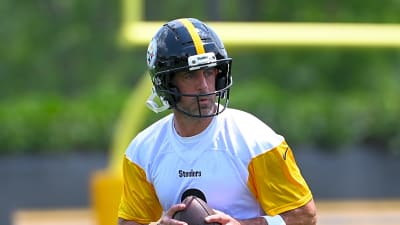
The best trade that the Edmonton Oilers have made in the Connor McDavid era is the acquisition of defenceman Mattias Ekholm at the 2023 Trade Deadline from the Nashville Predators. Since the moment he arrived in Edmonton, Ekholm has been an extremely impactful player for the team, consistently playing the hardest minutes next to Evan Bouchard and performing exceptionally well. He has likely been Edmonton’s fourth-most valuable player behind McDavid, Draisaitl and Bouchard over the past three seasons.
However, in 2024-25, Ekholm’s season was plagued by injuries. Firstly, it was reported that Ekholm had been playing through an illness throughout the season. Then, he missed six games in March in which he seemed to be battling both an illness and a lower-body injury. When he returned, he only played four games in late March until missing several more games to a nagging lower-body injury yet again. He would return in a game against the San Jose Sharks on April 11, but wound up leaving after just three shifts, and the next day, TSN’s Ryan Rishaug reported that there was a possibility that Ekholm’s season could be over.
Luckily, Ekholm was able to return late in Edmonton’s playoff run during Game 5 of the Western Conference Finals. However, his play had several ups and downs. Unfortunately, for many fans, Ekholm’s most memorable moments in the 2025 playoffs were his critical mistakes on key goals against during Games 5 and 6 of the Stanley Cup Finals as the Oilers ultimately lost to the Florida Panthers for the second consecutive season.
Prior to this season, Ekholm was exceptionally durable. After all, he played 76+ games in each of the prior three seasons, and before that, Ekholm had a consecutive five-year streak of playing 80+ games (alongside also playing in all 68 of Nashville’s games during the shortened 2019-20 season).
But Ekholm turned 35 this past May. As he enters the final year of his contract, questions remain about how much of an impact Ekholm can have, given his age and the injuries he dealt with last season.
Will Ekholm continue to be a top-pairing defenceman for the Oilers moving forward? Or will his minutes have to be reduced as his age finally catches up? Let’s take a closer look.
Firstly, let’s dive into Ekholm’s on-ice impacts at even-strength. Specifically, I like using EvolvingHockey RAPM’s tool, an advanced regression model that attempts to measure a player’s offensive impact (generating scoring chances) and defensive impact (preventing scoring chances). It does this by taking their on-ice results and attempting to account for factors out of their control, such as quality of teammates, quality of competition, zone starts and so on. It’s not the be-all-end-all, but if used correctly, it can be extremely useful to get an idea of a player’s two-way impact. Here are Ekholm’s year-by-year RAPM impacts over the past five seasons:

Typically, most age curve studies indicate that a defenceman’s peak years are often between ~25-29. But, Ekholm seems to defy these standard age curves.
Ekholm is a player who has steadily and consistently improved over his career. He was consistently a fantastic top-four defenceman in Nashville, and has been even better in Edmonton. Both his offensive and defensive impacts have been extraordinary, to the point that his net two-way impact (RAPM xG ±) ranks second among all defencemen throughout the past three seasons, even slightly higher than Evan Bouchard’s (!). Simply put, these results are elite, and the fact that they have sustained in both Nashville and Edmonton strongly suggests that these results aren’t just some byproduct of playing next to McDavid or Draisaitl; this is truly reflective of his ability.
Now, looking into Ekholm’s raw results, he did see a decline towards the second half of 2024-25, particularly in the month of February. With Ekholm on-ice during that month, the Oilers were out-scored at a horrendous ratio of 1 to 11, and his high-danger chance share of 40 percent was also far from pretty. However, it must be mentioned that it was around late January / early February when it was reported that Ekholm was playing through an illness. Furthermore, Ekholm boasted a fantastic 63 percent expected goal share in January, and a 67 percent expected goal share in the few games he played in March. Thus, it’s quite reasonable to say that his play in February is an outlier and can be attributed to his illness.
Let’s dive even deeper into Ekholm’s play. Per AllThreeZones, here are Ekholm’s microstats from 2024-25:

One thing that immediately stands out in this graph is Ekholm’s entry defence results.
Now, as players enter their mid-to-late thirties, one aspect of their game that immediately tends to see a dip is their foot speed. For defencemen, this can often result in a significant decline in their rush defence. One notable example that most Oilers fans should recall is Duncan Keith, who ranked as the NHL’s worst defender at suppressing scoring chances off the rush in his final two years at ages 38-39.
But that doesn’t seem to be the case for Ekholm, who has not only not seen a decline in his rush defending, but ranks as one of the best rush defenders in the NHL. His outstanding entry denial percentage of 17.2 percent this past season ranked 7th among all defenders in 2024-25.
While Ekholm’s foot speed at this stage of his career isn’t exactly awe-inspiring, he more than makes up for it with his defensive smarts. He is absolutely one of the most intelligent defencemen in the league, and his ability to consistently limit space and time at the blueline against some of the best rush attackers in the league is direct evidence of this.
As for the rest of Ekholm’s game, it is worth noting that his zone exit numbers were rather unimpressive this past season. Ekholm did see a slight offensive decline in 2024-25, so this is perhaps a reason why. Still, it should be noted that Ekholm has most often played next to Evan Bouchard, who does the heavy lifting in terms of breakout passing on this pair. So perhaps Ekholm’s zone exit results are a reflection of his role rather than his ability; Bouchard is the one who primarily facilitates the offensive breakout, while Ekholm tends to be the guy who busts the cycle and gets Bouchard the puck, while also clearing the puck out of the zone when needed. Ekholm’s solid retrieval success rate is a good sign, though his exit success rate could and should be higher.
All in all, there seems to be no visible sign of any regression in Ekholm’s overall play. If anything, his defensive impacts in 2024-25 actually improved compared to the prior season despite dealing with injuries/illnesses over the course of the season. Furthermore, his two-way impacts this season, at age 34-35, are better than they were three years ago. Very encouraging signs.
Now, we’ve mostly discussed Ekholm’s regular-season play thus far in this article. What about the 2025 playoffs?

As mentioned earlier, Ekholm returned in Game 5 of the Western Conference Finals against the Dallas Stars, and played in all six of Edmonton’s Stanley Cup Final games, so seven playoff games in total. At a raw glance, his box score totals were pretty solid, as Ekholm accumulated 6 points in those 7 games as a defenceman.
But there was quite some discussion regarding Ekholm’s play in the final two games of the cup finals. In Edmonton’s 5-2 loss in Game 5, Ekholm was brutally burnt off the rush by Marchand, leading to Florida’s first goal, and then a failed zone entry in the neutral zone by Ekholm directly led to Florida’s second goal. Then, in the ultimate cup-clinching Game 6, Ekholm (and Bouchard)’s breakout mishap in the defensive zone directly led to Florida’s first goal. These mistakes at critical moments have sown doubt in some fans if this is the start of a permanent regression in Ekholm’s play.
Still, two things must be mentioned here. Firstly, it’s quite obvious that Ekholm was not at 100% in the playoffs, particularly considering the fact that there was a chance he wouldn’t have played at all. And secondly, in the Stanley Cup Finals, Ekholm held a 52 percent expected goal differential, ranking second among Edmonton’s skaters and first amongst their defencemen. His actual goal differential was a mediocre 45 percent, but it again ranked first amongst Edmonton’s defencemen.
So even though Ekholm’s mistakes were quite poor and came at critical moments, they were merely a few blemishes on otherwise solid play, especially relative to Edmonton’s other players and especially considering that Ekholm was, again, not fully healthy.
All things considered, whether Ekholm can continue to be a top-pairing defender for the Oilers will depend on the exact severity of his injury, which has yet to be fully disclosed publicly in detail. But his underlying numbers all suggest that, so far, there hasn’t really been any decline in Ekholm’s ability at all.
While regression is still sooner than later as he turns 36 next May, it is extremely reasonable to say that Ekholm will continue to be a quality top-four defender for the Oilers in 2025-26, if not fully sustaining his current results on the top-pair next to Evan Bouchard.
More must-reads:
- Nikola Jokic’s agent sparks LeBron James to Denver speculation with Instagram post
- Terry McLaurin makes big decision amid his contract holdout
- The 'MLB mascot names' quiz
Breaking News
Trending News
Customize Your Newsletter
 +
+
Get the latest news and rumors, customized to your favorite sports and teams. Emailed daily. Always free!








